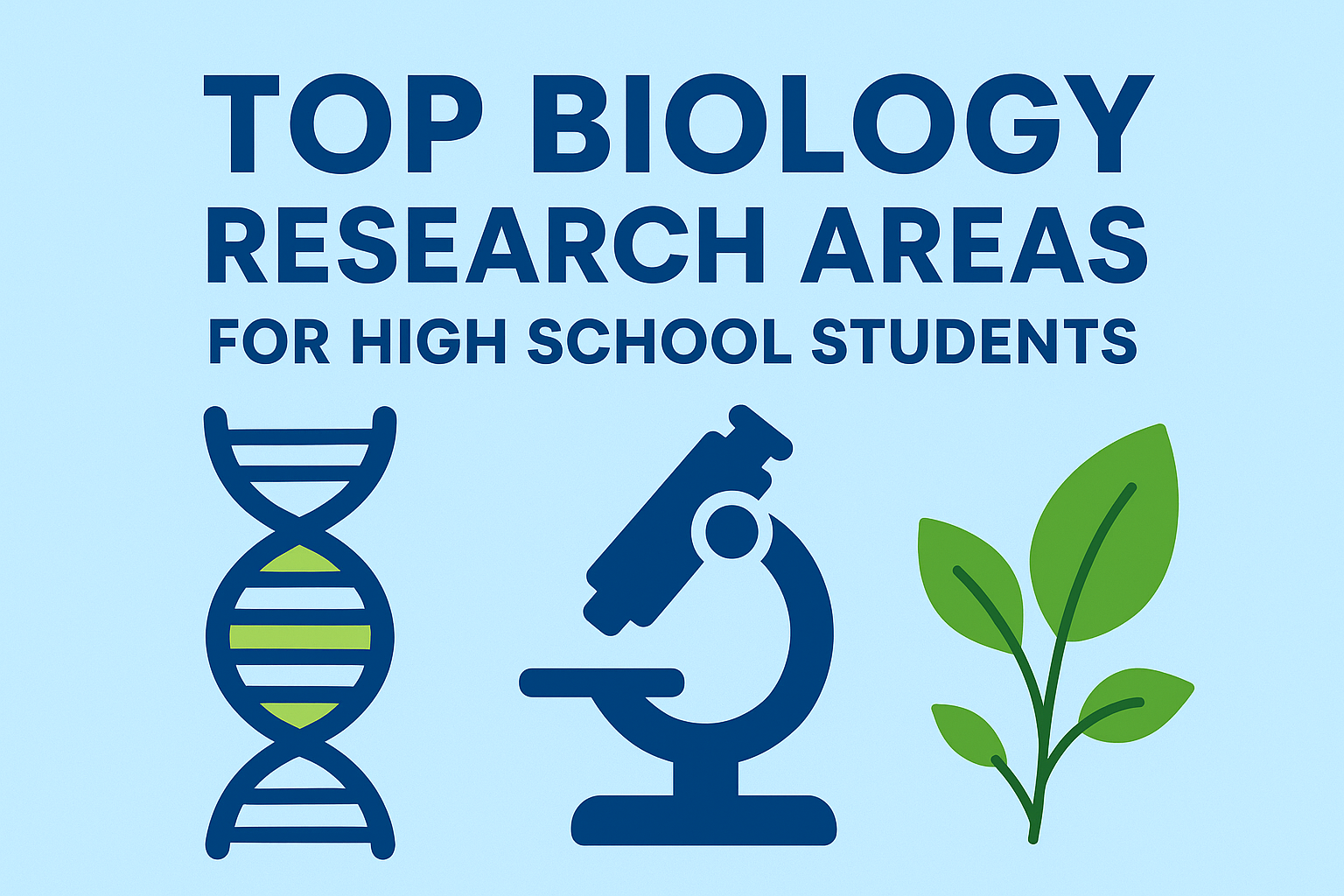Biology is the study of life, and it’s one of the most exciting sciences for young students to explore. With advances in technology, high school students now have opportunities to engage with real-world biology research earlier than ever. From genetics to the environment, there are many areas where curiosity can grow into meaningful projects and discoveries. Here are some of the top biology research areas that high schoolers can dive into:
1. Genetics and DNA
Genetics is at the heart of modern biology. High school students can learn about DNA, heredity, and how traits are passed on. Simple projects like extracting DNA from fruit, studying family traits, or exploring CRISPR breakthroughs can spark interest in biotechnology.
2. Microbiology
Microorganisms are everywhere—inside our bodies, in soil, and even in the air we breathe. High schoolers can study bacteria, fungi, and viruses. Projects might include testing the effectiveness of disinfectants, studying yeast growth, or exploring the microbiome’s role in health.
3. Ecology and Conservation Biology
This area focuses on how living things interact with each other and their environment. Students can investigate local ecosystems, biodiversity, or climate change effects. Activities like tracking bird species, testing soil health, or studying water quality make ecology hands-on and impactful.
4. Neuroscience and the Brain
Understanding how the brain works is one of the most fascinating challenges in biology. High schoolers can explore topics like memory, learning, and brain health. Simple experiments on reaction times, sleep patterns, or the effects of stress can introduce neuroscience concepts.
5. Human Physiology
Physiology is the study of how the human body works. Students can investigate areas like nutrition, exercise, and organ systems. Projects such as measuring heart rate under different conditions or testing the effects of diet on energy levels can make biology personal and engaging.
6. Synthetic Biology and Biotechnology
This cutting-edge field combines biology and engineering. High schoolers can explore bioengineering concepts like designing bacteria to clean up waste or studying how artificial DNA is used in research. Even at a basic level, learning about bioplastics or biofuels opens up exciting possibilities.
7. Evolution and Population Biology
Exploring how species change over time connects biology with history and the environment. Students can study natural selection, adaptation, and population genetics. Simulations or simple experiments with fast-breeding organisms like fruit flies can bring evolutionary biology to life.
8. Marine Biology
The ocean covers most of our planet, yet it remains largely unexplored. High schoolers can study marine ecosystems, coral reefs, or the impact of pollution on ocean life. Even simple local projects like testing water salinity or studying algae growth can provide insights into marine science.
How High School Students Can Get Started
- School labs: Use available equipment for small experiments.
- Citizen science projects: Platforms like Zooniverse or iNaturalist let students contribute to real research.
- Online resources: Free courses, tutorials, and virtual labs make advanced topics accessible.
- Science fairs and competitions: Presenting biology research projects can open doors to scholarships and mentorship.
